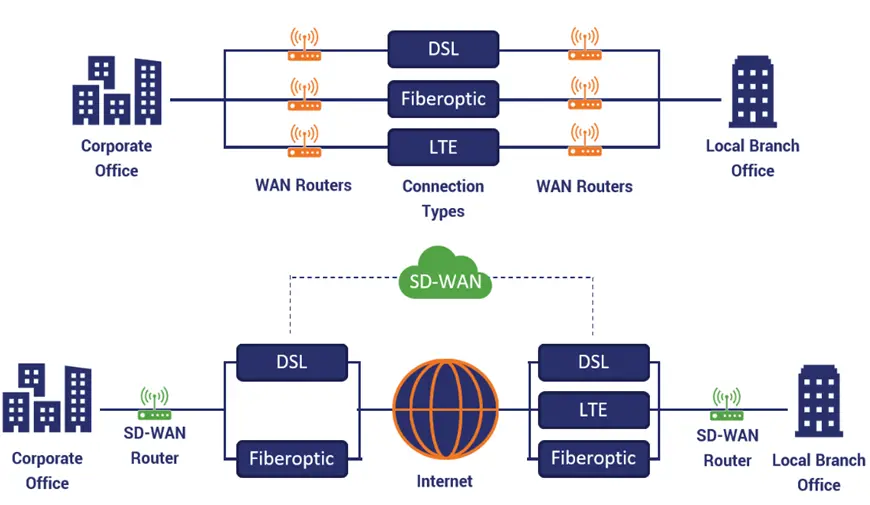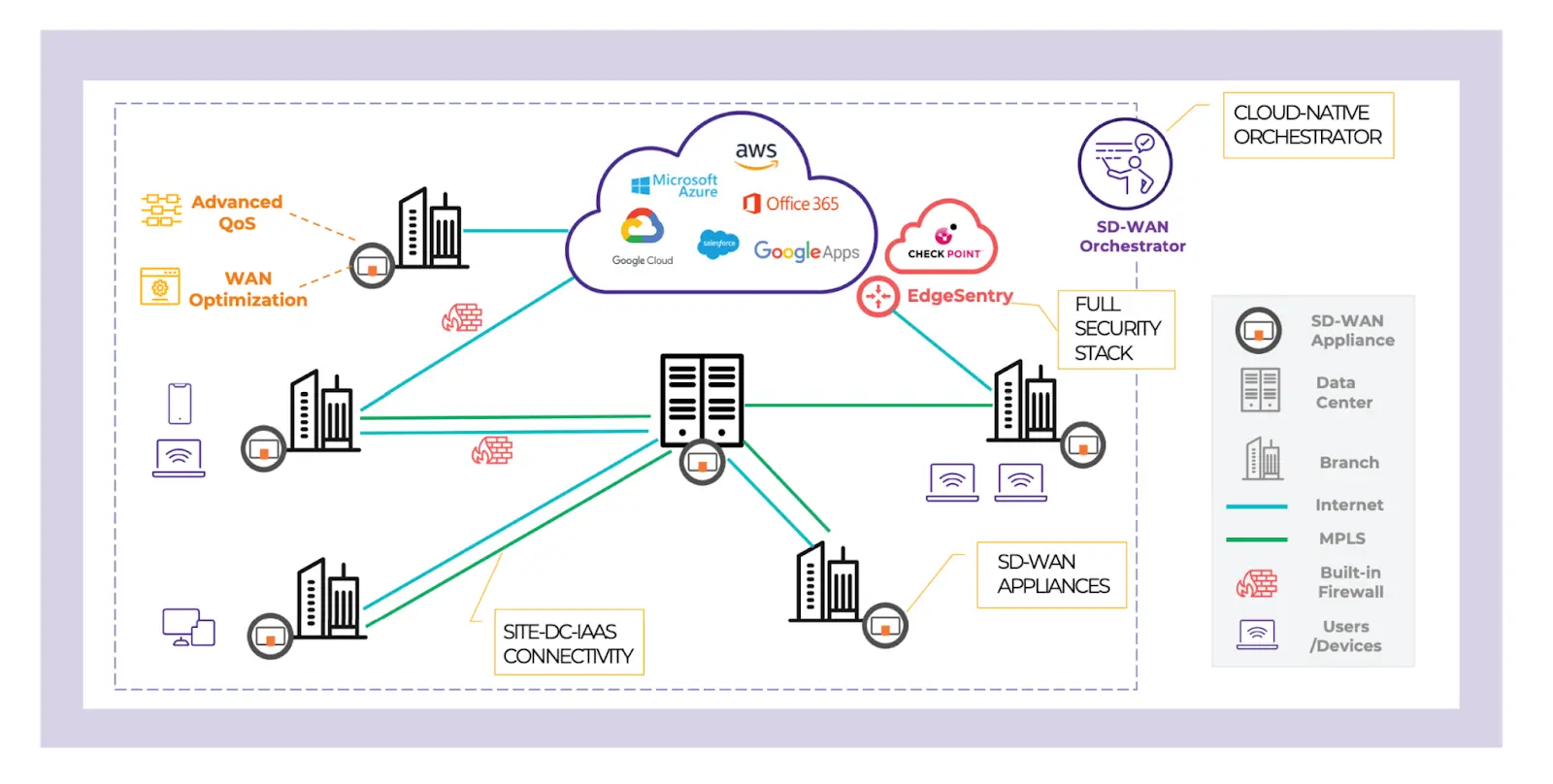
What is SD-WAN?
As we all know, wide area networking (WAN) is a network that connects multiple local area networks (LAN) over long distances. In traditional WANs, applications are hosted in the data center, traffic routed from sources to destinations based on TCP/IP addresses , access controls list tables and complex routing protocols. All of the control functions were distributed across all of the routers but traffic patterns have changed with the introduction of applications moving into the cloud, these could be enterprise apps that are now hosted in amazon web services or google cloud platform or Microsoft azure. Sending cloud traffic that is destined for the internet back to headquarters simply doesn't make sense; it adds delay that degrades application performance and it consumes costly leased line bandwidth.

A software-defined WAN (SD-WAN) is a more flexible WAN architecture that can take advantage of the Internet to reach the applications that hosted in the cloud instead of routed traffic based on ip addresses an sd-wan is application aware it uses software to more intelligently to route the traffic over WAN based on the business requirements for an application these include the priority of the application, performance, security, and the security policies that are required and that must be enforced. Also enable the ability to actively use the Internet as a secure reliable form of WAN transport and even 4G LTE can be used in addition to broadband internet and MPLS services.
How do SD-WANs work?
SD-WANs are made possible by separating the control plane from the data plane. In networking, the control plane refers to all elements that direct where data goes. The data plane forwards data as directed by the control plane. Historically, the control plane and the data plane were coupled tightly using vendor-specific hardware appliances. SD-WANs separate the software-based control plane from the hardware-based data plane, enabling routing to occur in software that runs on commodity hardware rather than in specialized hardware routers.
Benefits of SD-WAN

Cost Reduction
Opting for an SD-WAN provider enables organizations to use broadband internet, LTE, or a combination of both. By intelligently routing traffic based on application priorities, SD-WAN ensures efficient use of bandwidth, preventing overprovisioning and associated costs SD-WAN's centralized management platform also reduces the need for on-site IT personnel at branch locations, leading to labor cost savings.

Improved Performance
SD-WAN analyzes traffic patterns and application requirements to determine the optimal path for data transmission. This ensures that critical applications like VoIP or video conferencing are prioritized and routed over the most suitable connection. SD-WAN also constantly monitors network conditions and adjusts traffic routing in real-time to optimize performance and avoid congestion.

Increased Agility
SD-WAN edge devices can be deployed rapidly at branch locations, often within hours, compared to days or weeks for traditional WAN setups. As your business grows, adding new sites or increasing bandwidth is relatively straightforward with SD-WAN, accommodating changes in network demands efficiently.

Simplified Management
SD-WAN allows for the use of multiple internet connections (like broadband, LTE, and MPLS) simultaneously. This creates redundancy, meaning if one connection fails, traffic can be seamlessly rerouted over another. SD-WAN also constantly monitors the performance of each connection and dynamically reroutes traffic to the best available link, optimizing performance and minimizing disruptions.

More reliable networks
With SD-WAN, network administrators can oversee and configure the entire WAN infrastructure from a single, central location. They can also apply policies and configurations across all branches, reducing inconsistencies and errors. SD-WAN can include advanced security features like encryption and firewall protection too, making it easier for administrators to manage security teams and respond to threats.

ExtremeCloud SD-WAN
One of the best SD-WAN vendors is Extreme Networks. ExtremeCloud SD-WAN is a flexible, secure solution that delivers the benefits of SD-WAN, while reducing risk, simplifying operations, and improving productivity with Unified Management, Fabric to the Edge, and best-in-class Application Performance Management packaged as a cost-effective OPEX subscription. Extreme Networks enables unified management across wireless, wired and SD-WAN – there are only 5 vendors including us that do this effectively of that 5, only 3 including us have credible application performance management.
Why ExtremeCloud SD-WAN?

High Availability (HA)
Site resilience solution with Active-Standby SD-WAN Edge Platform failover. The HA package includes the service licence + standby hardware.

Remote Visibility + Control (VandC)
Perform single-ended AppPerf measurements for network targets outside the end-to-end SD WAN overlay.

Improved Reporting
Additional storage and functionality for the SD-WAN Orchestrator reporting module, increases data retention from 1 to 13 months.

On-site Next Business Day (NBD) Support
Get an on-site technician (NBD) to replace faulty hardware.

Security (EdgeSentry)
Securing SD-WAN-enabled sites with an always up-to-date cloud-based Firewall-as-a-Service (FWaaS), Secure Web Gateway (SWG), Data Loss Prevention (DLP) and Sandbox solutions.

Branch and Data Centre WAN Optimization
Enable WAN Optimization Compression functionality for low capacity branch SD-WAN sites; Data Centre WAN Optimization: Enable WAN Optimization Compression functionality for high capacity Data Centre SD-WAN sites.